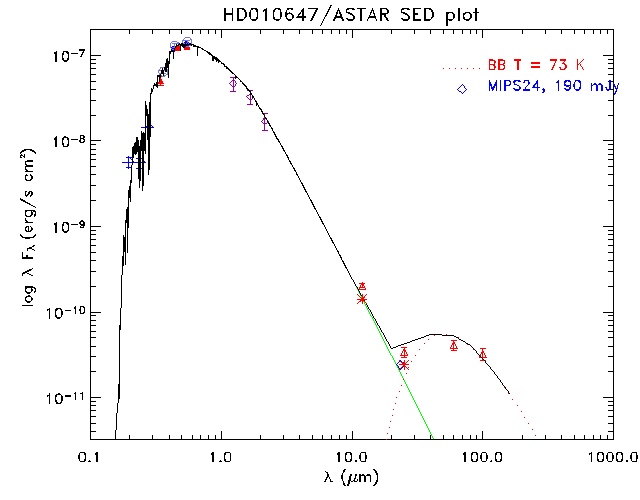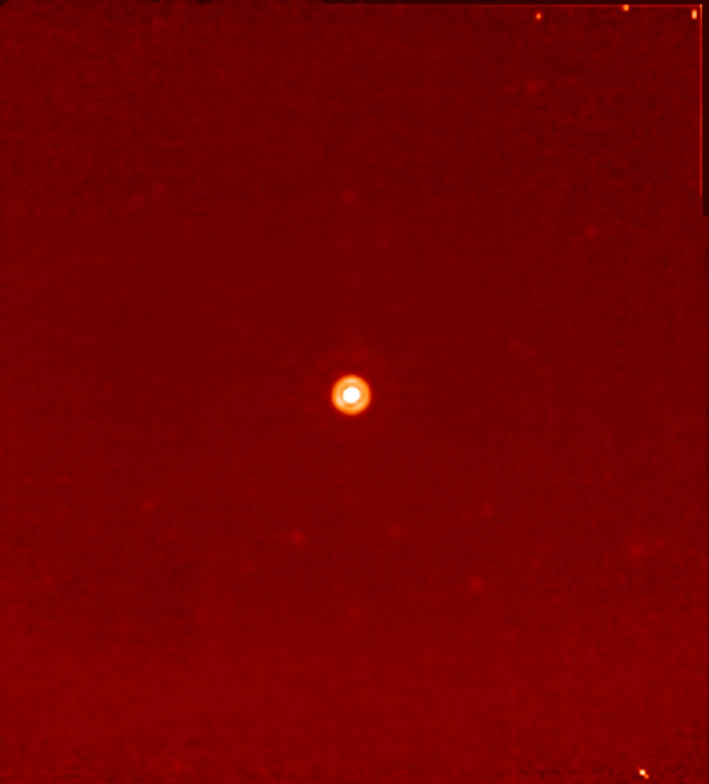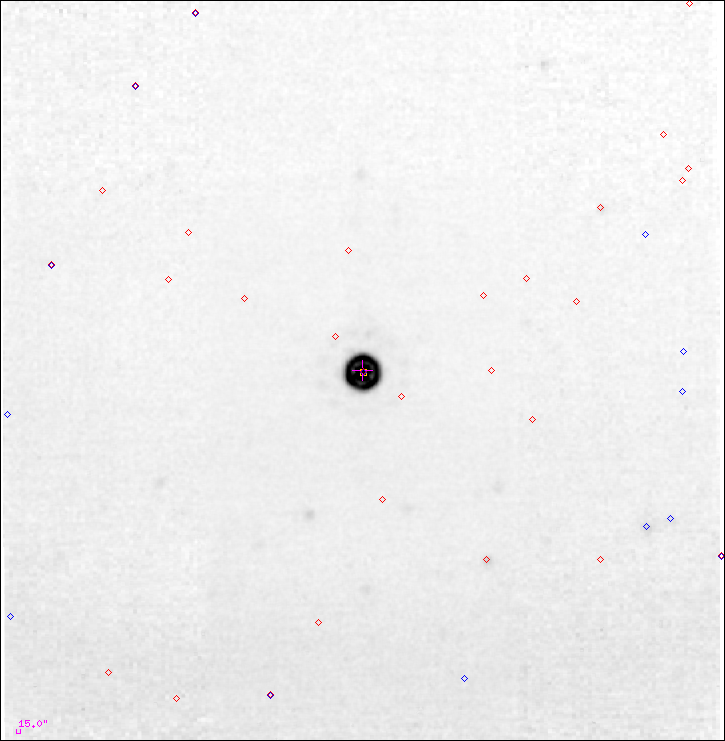
Figure 1: SED plot for HD10647. Purple dimonds are 2MASS de-saturated points, red trangles are IRAS meansurements (without color correction), red asterisks are IRAS 12 and 25 color corrected fluxes.
Principal:
Deputy:
Analyst:
AORKEYS:
Last Updated:
As expected, this task generated a total of 44 Si:As DCEs on the star. Due to the high cosmic hit rate, only 32 DCEs are used for aperture photometry measurement. Deatails are available here. The average total counts within the 6 pixel aperture are 2.483e4± 9.378e2 (~4%) after removal of the background value estimated from the sky annulus between 12 to 17 pixels. Using a preliminary flux conversion factor of 1.5e5 DN/s to Jy and aperture correction of 1.146, the total flux from the target is 190 mJy.
The SED of HD10647 is plotted in Figure 1. The new 24 um flux is overplotted as blue dimond while the IRAS fluxes (without color correction) are plotted as red triangles. IRAS 12 and 25 um fluxes are also color corrected (shown as red asterisks) based on the photospheric temperture of 6250K. Based on the Kurucz model prediction, the photospheric flux is ~150 mJy at 23.675 um, which leads to an infrared excess ~20%±5%.

Figure 1: SED plot for HD10647. Purple dimonds are 2MASS de-saturated points, red trangles are IRAS meansurements (without color correction), red asterisks are IRAS 12 and 25 color corrected fluxes.
The mosaic image of the whole 24 um field is display in Figure 2. There are several faint sources (~1 mJy) detected in the field. The field identification from Aladin is displayed in Figure 3, where the 2MASS sources are identified as red diamonds and Guide Star catalog objects are identified as blue diamonds.

Figure 2: Mosaic image (42 DCEs) for HD10647, produced by mips_enhancer with scale of 0.125 and WCS information.

Figure 3: Aladin source identification in HD10647 field. 2MASS sources are identified as red diamonds and GSC sources are identified as blue diamonds.
The PSF from the target shows no obvious differences from the regular 24 um calibrator, HD159330, a K2 III star. Preliminary PSF subtractions (both in mosaic images and individual DCE bases) do not show any significant residual. However, the FWHM of the target is slightly larger (2-3%) than the calibrator in both X and Y directions. Details are here. The structure of the circumstellar disk remains unresolved.
Conclusions
MIPS 24 um array detects 190 mJy (± 4%) from the debris disk target HD10647. Compared to the Kurucz model predition, the star shows 20± 5% at 23.675 um, consistent with the IRAS IRE measurement (40± 15% at 25 um). The PSF from the star shows no obvious difference from the regular 24 um calibrator HD159330, and the debris disk is unresolved.
Output and Deliverable Products
Actions Following Analysis
Due to the solar storm, the task is incomplete in the Ge arrays. This task will be repeated in Campaign X1.